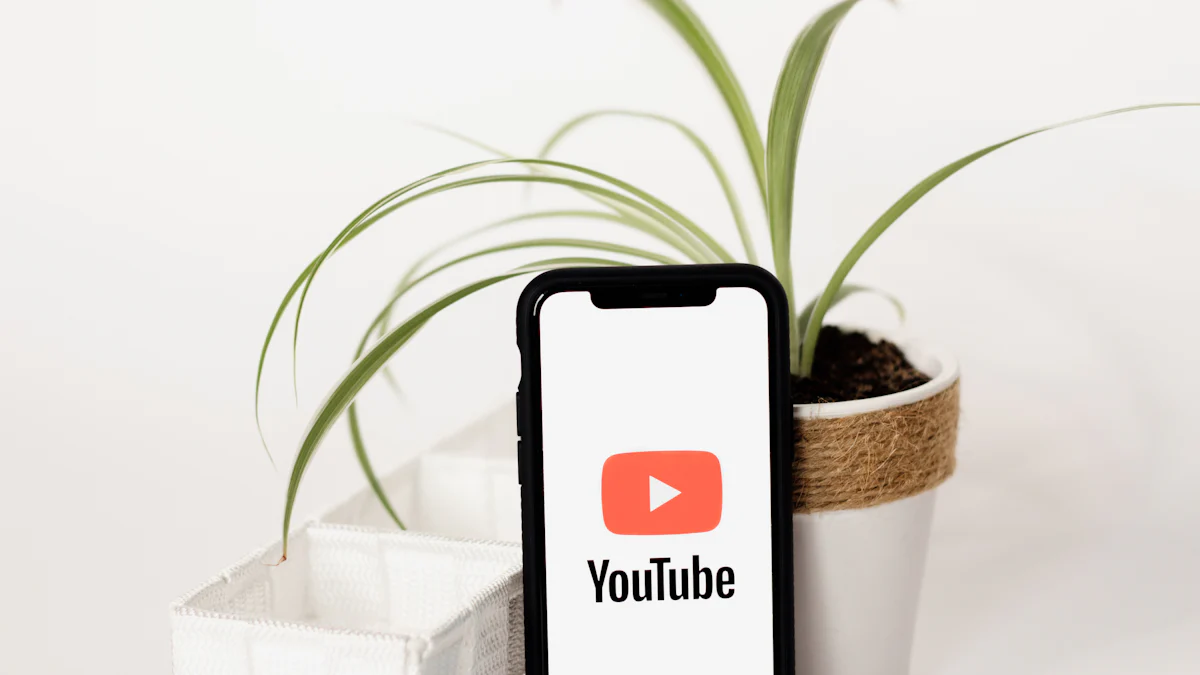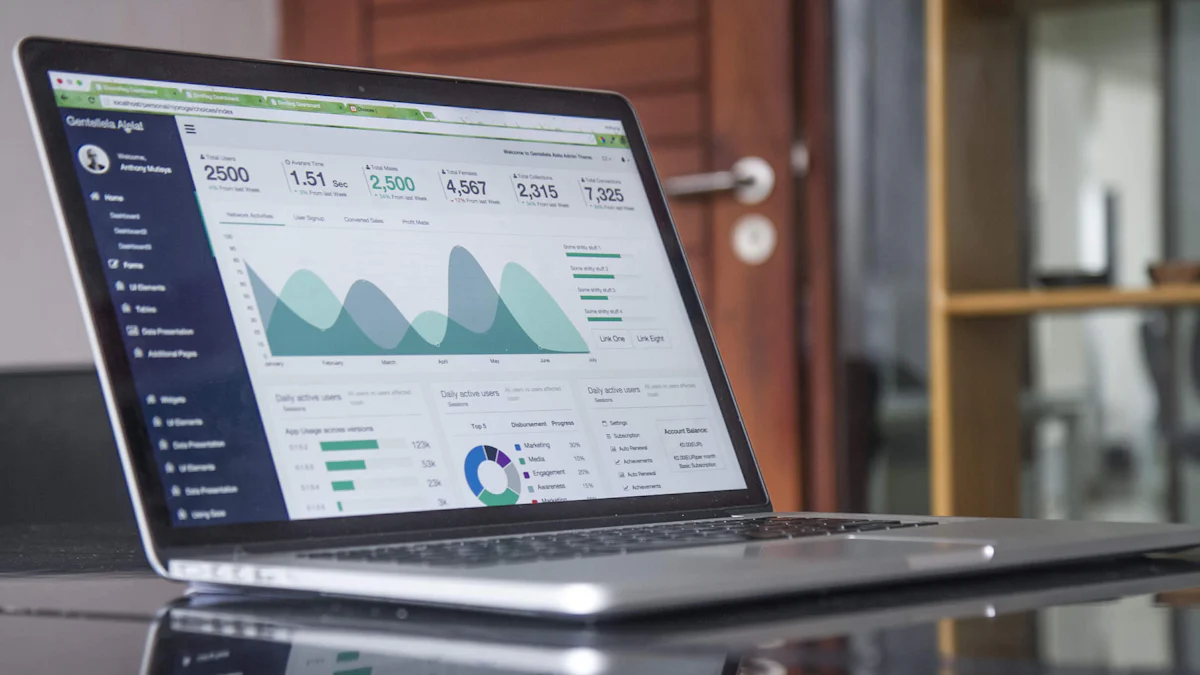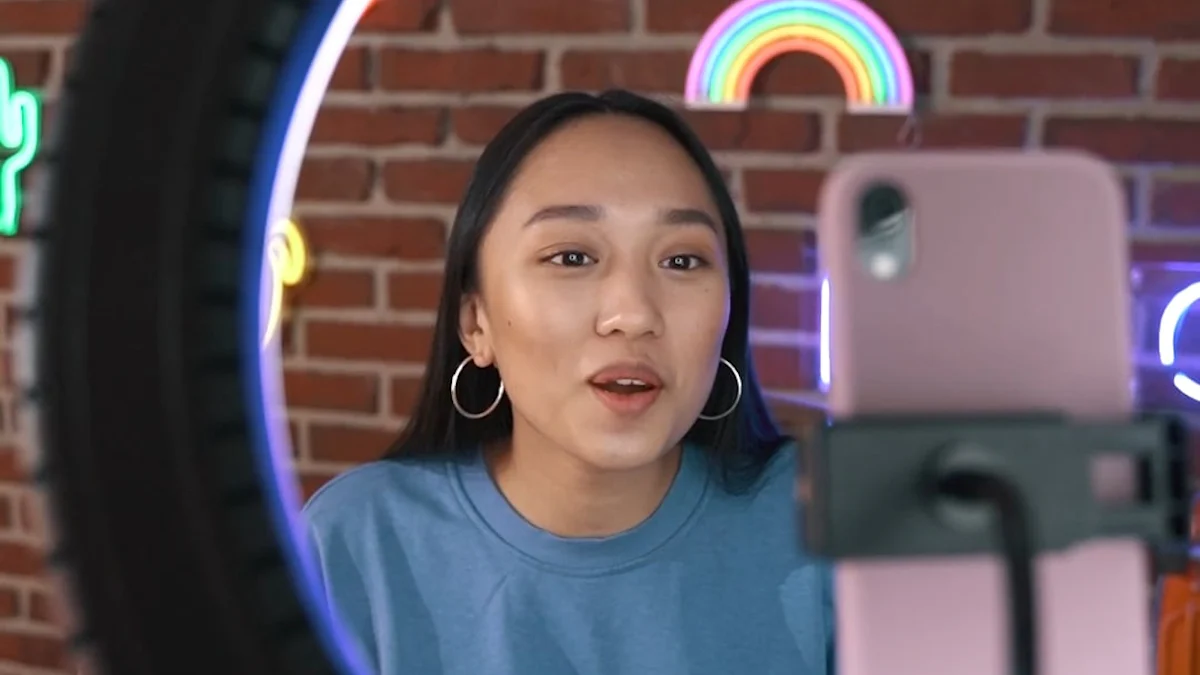Top 10 Influencer Marketing KPIs You Need to Track in 2025

Tracking influencer marketing KPIs is your key to unlocking campaign success in 2025. With brands projected to spend $9.29 billion on influencer marketing, a 14.2% increase from 2024, the competition is fiercer than ever. You need to measure what matters. KPIs help you focus on results that drive revenue, not just vanity metrics. By analyzing these metrics, you can optimize campaigns, align them with your goals, and boost ROI. For example, calculating ROI using [(Revenue – Cost) / Cost] × 100 ensures every dollar spent delivers measurable value. Don’t leave your campaigns to chance—track the right KPIs and take control.
Understanding Influencer Marketing KPIs
What Are KPIs?
Key performance indicators (KPIs) are measurable values that show how effectively you’re achieving your goals. In influencer marketing, KPIs help you track the success of your campaigns by focusing on specific metrics like engagement rate, reach, and conversions. These indicators give you a clear picture of what’s working and what needs improvement. For example, tracking influencer reach tells you how many unique individuals saw your content, while engagement rate measures how actively your audience interacts with it. Without KPIs, you’re essentially flying blind, unable to gauge the true impact of your efforts.
Why KPIs Are Crucial for Influencer Marketing
KPIs are the backbone of successful influencer marketing. They provide quantifiable metrics to evaluate your campaign’s performance. By tracking KPIs, you can make informed decisions to improve results and maximize your return on investment. For instance, a spike in brand mentions after a campaign signals increased visibility, while a high conversion rate confirms that your strategy is driving sales. KPIs also set clear expectations for your partnerships with influencers, ensuring both parties work toward measurable outcomes. Without them, you risk wasting resources on strategies that don’t deliver.
The Role of KPIs in Influencer Marketing Campaigns
KPIs play a vital role in shaping and optimizing influencer marketing campaigns. They help you identify which influencers are driving the most value and which content resonates best with your audience. For example, tracking influencer marketing metrics like traffic and sales reveals how well your campaign is converting viewers into customers. Additionally, KPIs like earned media value (EMV) assign a dollar value to the exposure your campaign generates, helping you justify your investment. By focusing on key performance indicators, you can fine-tune your strategy to achieve better results and higher ROI.
Pro Tip: Use a mix of KPIs to get a comprehensive view of your campaign’s performance. Don’t rely on a single metric like engagement rate—combine it with reach, conversions, and sentiment analysis for deeper insights.
Top 10 Influencer Marketing KPIs to Track in 2025

Engagement Rate
Definition
Engagement rate measures how actively your audience interacts with influencer content. It includes likes, comments, shares, and saves. This metric reflects how well the content resonates with viewers and encourages participation.
Importance
A high engagement rate shows that your campaign is connecting with the audience. It’s not just about how many people see the content but how many care enough to interact. This KPI is crucial for building brand awareness and fostering trust. When influencers generate meaningful engagement, it signals that their followers are genuinely interested in your brand.
Measurement
Calculate engagement rate by dividing total interactions (likes, comments, shares) by the total number of followers, then multiplying by 100. For example, if a post receives 500 interactions and the influencer has 10,000 followers, the engagement rate is 5%. Use this metric to compare influencers and identify those who deliver the best results.
Reach and Impressions
Definition
Reach refers to the total number of unique individuals who see your content. Impressions represent the total number of times the content is displayed, including multiple views by the same person.
Importance
Reach and impressions are essential for evaluating the visibility of your influencer marketing campaigns. High reach indicates broad exposure, while impressions show how often your content stays in front of viewers. Together, they help you assess your campaign’s ability to boost brand awareness and attract potential customers.
Measurement
Track reach and impressions using analytics tools provided by social media platforms. Compare these metrics to your campaign goals to ensure your content reaches the right audience. For example, if your goal is to increase awareness, focus on maximizing reach.
Click-Through Rate (CTR)
Definition
CTR measures the percentage of people who click on a link or call-to-action (CTA) in your influencer’s content. It’s calculated by dividing the number of clicks by the total impressions and multiplying by 100.
Importance
CTR is a direct indicator of how effectively your campaign drives traffic to your website or landing page. A strong CTR means your content is compelling enough to inspire action. For influencer marketing, the average CTR on Instagram is 1.08%, so aim to meet or exceed this benchmark.
Measurement
Use tracking links or UTM parameters to monitor clicks from influencer content. Compare the CTR across different influencers to identify who delivers the best results. This KPI helps you optimize your campaigns for higher ROI.
Conversion Rate
Definition
Conversion rate measures the percentage of people who take a desired action after interacting with influencer content. These actions could include making a purchase, signing up for a newsletter, or downloading an app. It’s calculated by dividing the number of conversions by the total number of clicks or visitors, then multiplying by 100.
Importance
This KPI is critical for evaluating the effectiveness of your influencer marketing campaigns. A high conversion rate shows that your strategy successfully turns viewers into customers. Several factors influence this metric:
- Follower engagement drives better results.
- Relevant, high-quality content increases the likelihood of conversions.
- Trustworthy influencers foster positive responses.
- Precise audience targeting enhances conversion potential.
- Clear calls-to-action (CTAs) guide followers toward desired outcomes.
By focusing on these elements, you can improve your campaign’s ability to generate tangible results, such as increased sales or sign-ups.
Measurement
Track conversion rates using tools like Google Analytics or platform-specific insights. For example, if 1,000 people click on a link in an influencer’s post and 50 make a purchase, the conversion rate is 5%. Compare this metric across influencers to identify who delivers the best ROI.
Cost Per Engagement (CPE)
Definition
Cost per Engagement (CPE) calculates how much you spend for each interaction, such as likes, comments, or shares, generated by your campaign. It’s determined by dividing the total campaign cost by the number of engagements.
Importance
CPE helps you evaluate the cost-effectiveness of your influencer marketing efforts. A lower CPE means you’re getting more interactions for every dollar spent. This metric is essential for budgeting and optimizing your strategy. It ensures you allocate resources to influencers and campaigns that deliver meaningful engagement. Additionally, advertisers only pay for ads that generate real interactions, preserving your budget for high-performing content.
Measurement
To calculate CPE, divide the total campaign cost by the total number of engagements. For instance, if you spend $5,000 on a campaign that generates 10,000 engagements, your CPE is $0.50. Use this metric to compare influencers and refine your approach for maximum efficiency.
Return on Investment (ROI)
Definition
ROI measures the profitability of your influencer marketing campaigns. It’s calculated using the formula: (Revenue Generated - Cost of Campaign) / Cost of Campaign × 100%. This KPI shows how much value your campaign delivers relative to its cost.
Importance
ROI is the ultimate indicator of success. It combines multiple influencer marketing metrics, such as engagement rate, reach and impressions, and conversions, to provide a comprehensive view of your campaign’s performance. A positive ROI confirms that your investment drives results, such as increased brand awareness, sales, or customer loyalty. By tracking ROI, you can justify your spending and identify areas for improvement.
Measurement
Use analytics tools to track revenue generated from influencer campaigns. For example, if a campaign costs $10,000 and generates $30,000 in revenue, the ROI is 200%. Compare ROI across campaigns to identify the most profitable strategies and influencers.
Audience Growth Rate
Definition
Audience Growth Rate measures how quickly your brand’s audience expands during an influencer marketing campaign. It tracks the percentage increase in followers or subscribers over a specific period. This KPI highlights how well your campaign attracts new audiences and builds your online presence.
Importance
A strong audience growth rate indicates that your campaign resonates with viewers and draws attention to your brand. It’s a key metric for assessing long-term success, as a growing audience often leads to higher engagement and conversions. For example, campaigns with high-performing influencers achieve an average growth rate of 3.2%, compared to just 0.1% for general performers. By focusing on this KPI, you can identify influencers who effectively boost your brand awareness and audience engagement.
Measurement
To calculate audience growth rate, divide the number of new followers gained during the campaign by the starting follower count, then multiply by 100. For instance, if you start with 10,000 followers and gain 500 new ones, your growth rate is 5%. Use the table below to benchmark your performance:
| Performance Tier | Audience Growth Rate |
|---|---|
| General Performers (GP) | -0.1% |
| Medium Performers (MP) | 1.0% |
| High Performers (HP) | 3.2% |
| IG Average | 0.1% |
Brand Mentions
Definition
Brand mentions refer to the number of times your brand is mentioned across social media, blogs, or other platforms during a campaign. These mentions can include direct tags, hashtags, or even unlinked references.
Importance
Brand mentions are a powerful tool for measuring brand awareness and visibility. They enhance customer trust, influence buying decisions, and improve search engine rankings. Google recognizes mentions as trust signals, which boosts your discoverability. Additionally, tracking mentions provides valuable insights into customer opinions and competitor strategies. By monitoring this KPI, you can assess your campaign’s effectiveness and identify growth opportunities.
Measurement
Use social listening tools to track brand mentions across platforms. Look for trends in how often your brand is mentioned and the context of these mentions. For example, a spike in mentions after a campaign indicates increased visibility. Focus on influencers who generate consistent, positive mentions to maximize your ROI.
Sentiment Analysis
Definition
Sentiment analysis evaluates the tone and emotion behind mentions of your brand. It categorizes feedback as positive, neutral, or negative, helping you understand how audiences perceive your campaign.
Importance
This KPI goes beyond numbers to reveal the quality of audience engagement. Positive sentiment builds trust and loyalty, while negative sentiment highlights areas for improvement. By analyzing sentiment, you can refine your influencer marketing strategy to foster stronger connections with your audience. Tools like MonkeyLearn and Brandwatch make it easier to track sentiment in real-time, ensuring you stay ahead of potential issues.
Measurement
Leverage sentiment analysis tools to monitor mentions and categorize them by tone. For example, MeaningCloud analyzes sentiment in multiple languages, while Talkwalker provides insights into campaign performance. Use these tools to identify trends and adjust your strategy to maintain a positive brand image.
Pro Tip: Combine sentiment analysis with other influencer marketing metrics like conversion rate and audience growth rate for a comprehensive view of your campaign’s success.
Content Performance
Definition
Content performance measures how well influencer-generated content achieves your marketing goals. It evaluates the effectiveness of posts, videos, or stories in driving engagement, reach, and conversions. This metric helps you understand whether your content resonates with the audience and delivers meaningful results.
Importance
Tracking content performance is essential for optimizing your influencer marketing campaigns. It reveals what works and what doesn’t, allowing you to focus on strategies that maximize ROI. High-performing content boosts brand awareness by reaching a wider audience and encouraging interaction. For example, posts with high engagement rates and impressions indicate strong audience interest. By analyzing these metrics, you can refine your approach to create content that drives better results.
Content performance also helps you identify the right influencers for your brand. Influencers with a history of producing engaging, impactful content are more likely to deliver value. This ensures your investment generates measurable outcomes, such as increased awareness and conversions.
Measurement
You can measure content performance using several influencer marketing metrics:
- Engagement Rate: Tracks likes, comments, shares, and saves to gauge audience interaction.
- Reach and Impressions: Measures how many people see your content and how often it’s displayed. High numbers indicate strong visibility.
- Conversion Rate: Evaluates how effectively content drives desired actions, like purchases or sign-ups.
Additionally, monitor follower growth rate and posting frequency to assess long-term impact. Use analytics tools to track these metrics and compare them across campaigns. This data helps you identify trends and optimize future strategies for maximum ROI.
Pro Tip: Combine engagement rate with reach and conversion rate for a comprehensive view of content performance. This approach ensures you focus on metrics that truly matter.
Tools and Methods for Tracking Influencer Marketing KPIs

Best Tools for Influencer Marketing Metrics
Tracking influencer marketing metrics becomes much easier when you use the right tools. These platforms simplify data collection and analysis, giving you actionable insights to improve your campaigns. Some of the most reliable tools include Upfluence, Aspire, HypeAuditor, Grin, and Meltwater. Each of these platforms offers unique features to help you monitor engagement, reach, and conversions. For example, Upfluence allows you to identify top-performing influencers, while Aspire focuses on campaign management and ROI tracking.
Other excellent options include Heepsy and Julius, which specialize in influencer discovery and performance analysis. HypeAuditor stands out for its ability to detect fake followers and ensure authentic engagement. By leveraging these tools, you can track KPIs like brand awareness and audience growth with precision. This ensures your campaigns deliver measurable results and maximize ROI.
Manual vs. Automated Tracking
When it comes to tracking influencer marketing KPIs, you have two main options: manual or automated tracking. Manual tracking involves collecting data directly from social media platforms and analyzing it yourself. While this method gives you full control, it’s time-consuming and prone to human error. For instance, manually calculating engagement rates or reach can take hours, especially for large campaigns.
Automated tracking, on the other hand, uses advanced tools to gather and analyze data in real-time. Platforms like Grin and Meltwater automate processes like sentiment analysis and conversion tracking. This saves you time and ensures accuracy. Automated tracking also provides detailed reports, helping you make data-driven decisions faster. If you want to scale your influencer marketing efforts, automation is the way to go.
Integrating KPI Tracking with Campaign Management
To achieve the best results, you need to integrate KPI tracking into your overall campaign management strategy. This means using tools that combine influencer discovery, content creation, and performance analysis in one platform. Aspire and Upfluence excel in this area, offering features that streamline every stage of your campaign.
By integrating KPI tracking, you can monitor metrics like reach, engagement, and conversions without switching between tools. This holistic approach improves efficiency and ensures your campaigns align with your goals. For example, tracking audience growth alongside content performance helps you identify which strategies drive the most awareness. With integrated tracking, you can optimize your campaigns in real-time and boost ROI.
Pro Tip: Choose tools that offer customizable dashboards. This allows you to focus on the KPIs that matter most to your brand.
Tips for Setting Realistic KPI Targets
Aligning KPIs with Influencer Marketing Campaign Goals
To set realistic KPI targets, you need to align them with your influencer marketing campaign goals. Start by clearly defining what you want to achieve. Are you aiming to boost brand awareness, drive sales, or increase engagement? Once you know your objectives, integrate KPIs that directly measure these outcomes. For example, if your goal is to increase awareness, focus on metrics like reach and impressions.
Assess your current performance and analyze competitors to set benchmarks. This ensures your KPIs are both ambitious and achievable. For instance, if your competitors see a 3% audience growth rate, aim for a similar or slightly higher target. Use a mix of qualitative and quantitative KPIs to get a complete picture of your campaign’s success.
| Best Practice | Description |
|---|---|
| Clear Goal Setting | Align on your goals before influencer outreach to ensure KPIs are measurable. |
| Understand Target Audience | Know who your audience is to tailor your campaign effectively. |
| Use a Mix of KPIs | Incorporate both qualitative and quantitative KPIs for a comprehensive measurement. |
Pro Tip: Set specific objectives, such as increasing brand sentiment by 25%, and tie them to measurable KPIs. This approach keeps your campaign focused and results-driven.
Benchmarking Against Industry Standards
Benchmarking is a powerful way to set realistic KPI targets. By comparing your performance to industry standards, you can establish measurable goals that align with your organization’s objectives. For example, if the average engagement rate in your industry is 5%, use this as a baseline for your campaigns.
This process also helps you create targets that are ambitious yet achievable. Historical data and competitive analysis provide valuable insights into what’s possible. For instance, if your past campaigns achieved a 2% click-through rate, aim to exceed this while staying within industry norms. Benchmarking ensures your influencer marketing efforts remain competitive and effective.
- Benchmarking provides measurable benchmarks that align with organizational objectives.
- It helps establish realistic targets based on historical data and competitive standards.
- This process ensures that goals are ambitious yet achievable.
Pro Tip: Regularly update your benchmarks to reflect changes in the influencer marketing landscape. Staying current helps you maintain a competitive edge.
Adjusting Targets Based on Influencer Type and Audience
Not all influencers and audiences are the same, so your KPI targets shouldn’t be either. Micro-influencers often deliver higher engagement rates, while macro-influencers excel at reach. Adjust your targets based on the type of influencer you’re working with. For example, if you’re partnering with a micro-influencer, prioritize KPIs like engagement rate and conversion rate.
Audience demographics also play a critical role. Younger audiences may interact more with short-form content, while older demographics might prefer detailed posts. Tailor your KPIs to match these preferences. For instance, if your target audience values authenticity, focus on sentiment analysis and brand mentions.
Pro Tip: Collaborate with influencers to understand their audience’s behavior. This insight helps you set realistic targets that align with your campaign goals and maximize ROI.
Overcoming Challenges in Measuring Influencer Marketing KPIs
Addressing Inconsistent Data from Influencers
Inconsistent data from influencers can make it difficult to measure campaign performance accurately. You may face challenges like unclear performance metrics, uncertainty in crafting effective strategies, or confusion about using existing measurements. These issues often arise because influencers use different platforms and tools, leading to fragmented data.
To overcome this, establish clear expectations with influencers before launching your campaign. Request detailed reports that include metrics like engagement, reach, and conversions. Use influencer marketing software to centralize data collection and ensure consistency. This approach helps you compare influencer performance and make informed decisions to maximize ROI.
Measuring Long-Term Impact of Campaigns
Measuring the long-term impact of influencer marketing campaigns requires a strategic approach. You need to go beyond short-term metrics and focus on sustained results. Start by analyzing brand sentiment before, during, and after the campaign using social listening tools. Conduct surveys to measure brand awareness and recall among your target audience.
Track how the campaign affects audience perception of your brand values. Monitor engagement on influencer-generated content over time to assess its longevity. Additionally, measure follower growth and engagement on your brand’s social media channels. Look for increases in branded search volume and website traffic to evaluate the campaign’s broader impact. These steps ensure you capture the full value of your influencer marketing efforts.
Solving Attribution Challenges in Influencer Marketing Metrics
Attribution remains one of the toughest challenges in influencer marketing. Outdated methods like promo codes and affiliate links often lack traceability and can be exploited. This makes it hard to identify which influencers and strategies deliver the best results.
To solve this, adopt a comprehensive attribution strategy. Track engagement, reach, and impressions across all platforms. Use advanced influencer marketing tools that provide real-time data and detailed insights. These tools help you connect campaign outcomes to specific influencers, ensuring you allocate resources effectively. By addressing attribution challenges, you can optimize your campaigns and achieve better ROI.
Pro Tip: Combine long-term impact analysis with real-time attribution tracking to create a holistic view of your campaign’s success.
Tracking influencer marketing KPIs is essential for achieving success in 2025. These metrics give you the power to monitor performance, identify effective strategies, and optimize your campaigns for better results. By focusing on key indicators like engagement, reach, and conversions, you can enhance brand awareness and maximize ROI.
To stay ahead, use tools like Aspire and Upfluence to track metrics and refine your approach. Regularly review your data, compare it to your goals, and adjust your strategy based on insights. Collaborate with influencers to create authentic, engaging content that resonates with your audience. With the right KPIs and tools, you can continuously improve and achieve measurable success.
Pro Tip: Don’t just track numbers—analyze trends and take action. The more you optimize, the better your campaigns will perform.
FAQ
What is the most important KPI for influencer marketing?
The most important KPI depends on your campaign goals. If you want brand awareness, focus on reach and impressions. For driving sales, prioritize conversion rate and ROI. Always align KPIs with your objectives to measure success effectively.
How do I track influencer marketing KPIs accurately?
Use tools like Aspire, Upfluence, or HypeAuditor. These platforms automate data collection and provide real-time insights. Combine them with UTM parameters and tracking links to monitor clicks, conversions, and engagement seamlessly.
How often should I review my influencer marketing KPIs?
Review KPIs weekly during campaigns to track progress and make adjustments. After the campaign ends, analyze the data comprehensively to identify trends and optimize future strategies. Regular reviews ensure you stay on track.
Can I measure ROI for non-sales campaigns?
Yes! For non-sales campaigns, measure ROI using metrics like brand mentions, audience growth, and engagement rate. These KPIs show how well your campaign builds awareness and strengthens your brand presence.
How do I choose the right KPIs for my campaign?
Start by defining your goals. For awareness, focus on reach and impressions. For engagement, track likes, comments, and shares. For sales, prioritize conversion rate and ROI. Tailor your KPIs to match your objectives for better results.
Pro Tip: Always use a mix of KPIs to get a complete picture of your campaign’s performance.
See Also
Essential Influencer Marketing Statistics Every Marketer Should Understand
15 Must-Have Influencer Marketing Platforms for 2024 Success
Key Influencer Marketing Trends to Monitor in 2024
Affordable Influencer Marketing Platforms to Consider in 2024
